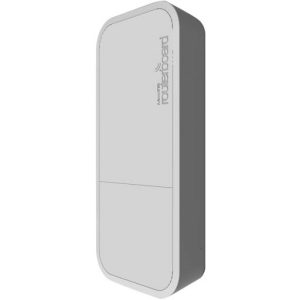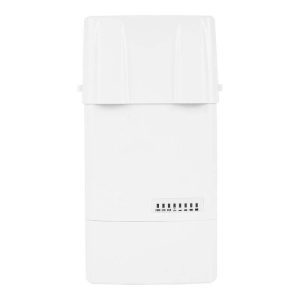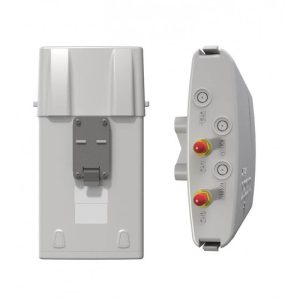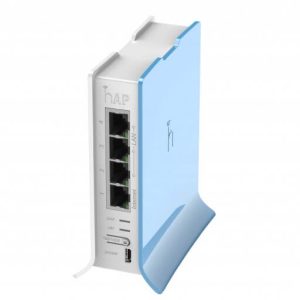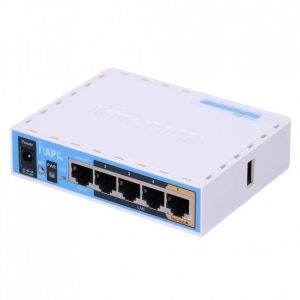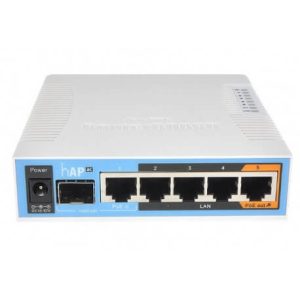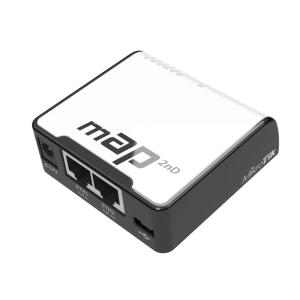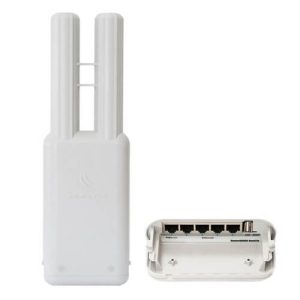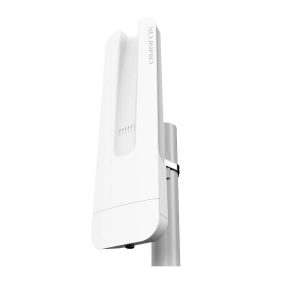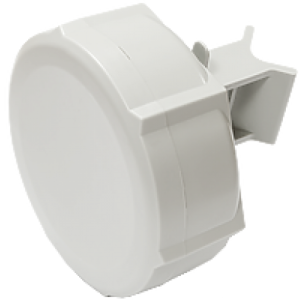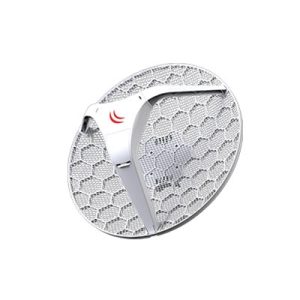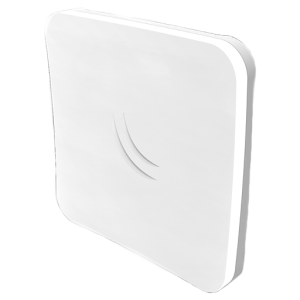Access Points
Showing 1–24 of 56 results
-
-
-
Access Points, Networking
Mikrotik hAP (home Access Point) mini
Specifications.
- CPU nominal frequency – 650MHz
- CPU core count – 1
- Size of RAM – 32 MB
- 10/100 Ethernet ports – 5 ports
- Number of USB ports – 1 port
- Max Power consumption – 3.5W
- Storage size – 16MB
- Wireless standards – 802.11b/g/n
SKU: DC00063 -
Access Points, Networking
Mikrotik Metal 2 Outdoor Wireless Access Point
Specifications.
- CPU nominal frequency – 400 MHz
- CPU core count – 1
- Wireless standards – 802.11b/g/n
- Supported input voltage – 9 V – 30 V
- Operating System – RouterOS
- Max Power consumption – 11.5W
- Storage size – 64 MB
SKU: DC00053 -
Access Points, Networking
Mikrotik Metal 52 ac Outdoor Wireless Access Point
Specifications.
- CPU nominal frequency – 720 MHz
- CPU core count – 1
- Size of RAM – 64 MB
- 10/100/1000 Ethernet ports – 1
- Wireless standards – 802.11a/b/g/n/ac
- Supported input voltage – 10 V – 30 V
- Max Power consumption – 11W
- Storage size – 16 MB
SKU: DC00054 -
Access Points, Networking
Mikrotik OmniTIK 5 ac Access Point
Specifications.
- CPU nominal frequency – 720 MHz
- Max Power consumption – 14W
- CPU core count – 1
- Storage size – 16MB
- Size of RAM – 32 MB
- 10/100/1000 Ethernet ports – 5 ports
- Number of USB ports – 1 port
- PoE in – Yes
- Operating System – RouterOS
SKU: DC00055
Buy access points for the best price in Kenya only at Dove Computers
Access points (AP) are a networking device that allows wireless devices to connect to a wired network. It acts as a bridge between a wireless device and a wired network, allowing wireless devices to access network resources, such as the Internet or a server.
They are typically used in Wi-Fi networks to provide wireless connectivity to devices such as laptops, smartphones, tablets, and other Wi-Fi-enabled devices. They are commonly found in homes, offices, schools, and other public places where wireless connectivity is needed.
It typically has one or more antennas that broadcast wireless signals, allowing devices within range to connect to the network. They may also have multiple Ethernet ports to connect to a wired network or other networking devices, such as switches or routers.
Access points may be standalone devices, or they may be integrated into other networking equipment, such as a wireless router. They can be configured with various security features, such as WPA2 encryption and MAC address filtering, to protect the network from unauthorized access.
Advantages of using access points
- Wireless connectivity: They provide wireless connectivity to devices, allowing users to connect to a network without the need for cables or physical connections. This makes it easier to access network resources from anywhere within range of the wireless signal.
- Increased mobility: Access points allow users to move around freely while staying connected to the network, which can be particularly useful in large offices or public places where users need to access network resources from different locations.
- Scalability: It can be easily added to a network to increase coverage or capacity, making it possible to expand the network as needed without major infrastructure changes.
- Improved network performance: Access points can help improve network performance by reducing congestion and providing faster data transfer rates. This is because they can be strategically placed to provide optimal coverage and reduce interference from other wireless devices.
- Advanced security features: Access points can be configured with advanced security features, such as WPA2 encryption and MAC address filtering, to protect the network from unauthorized access and ensure the privacy of network communications.
Types of access points
- Standalone access points: These are standalone devices that are dedicated to providing wireless connectivity to a network. They are typically managed using a web-based interface and can be configured with various security settings.
- Wireless routers: Many wireless routers also include built-in access points, allowing them to provide both wired and wireless connectivity to a network. These devices can also be configured to provide advanced security features, such as firewalls and VPNs.
- Mesh access points: These devices are designed to work together to provide wireless coverage over a large area. They communicate with each other wirelessly to create a mesh network, which can help ensure that users have access to the network from anywhere within range of the wireless signal.
- Outdoor access points: These are designed for use in outdoor environments, such as stadiums, parks, or industrial sites. They are typically weather-resistant and can provide wireless coverage over a larger area than indoor access points.
- Cloud-managed access points: These devices are managed using cloud-based software, which allows network administrators to manage and monitor access points from anywhere with an internet connection.
What to consider when purchasing an access point
- Coverage area: The coverage area of the access point is an important consideration, as it will determine how far the wireless signal will reach. The coverage area will depend on factors such as the type of antenna used and the power of the access point. It’s important to choose an access point that provides adequate coverage for the area in which it will be used.
- Number of users: The number of users that will be connecting to the network is another important factor to consider. A high-traffic network with many users will require a more powerful access point than a smaller network with fewer users.
- Data transfer rate: The data transfer rate of the access point is also an important consideration, as it will determine how quickly data can be transferred between devices on the network. A higher data transfer rate will generally result in faster network performance.
- Security features: Access points can be configured with various security features, such as WPA2 encryption, MAC address filtering, and guest network access. It’s important to choose an access point with the appropriate security features for the network, depending on the level of security required.
- Compatibility: The access point should be compatible with the existing network infrastructure, including the router and other networking devices. It’s important to choose an access point that is compatible with the network to avoid compatibility issues.
- Management and configuration: The ease of management and configuration of the access point is also an important consideration. Some access points can be managed remotely using cloud-based software, while others may require on-site management.
Visit Dove Computers for amazing offers.



